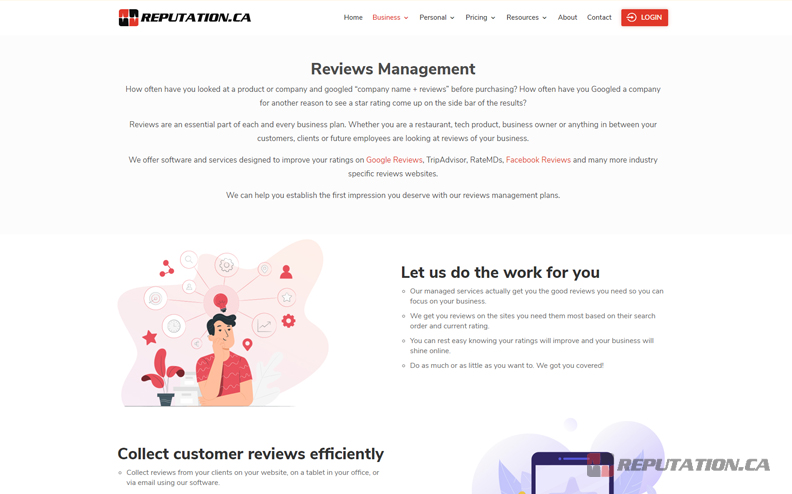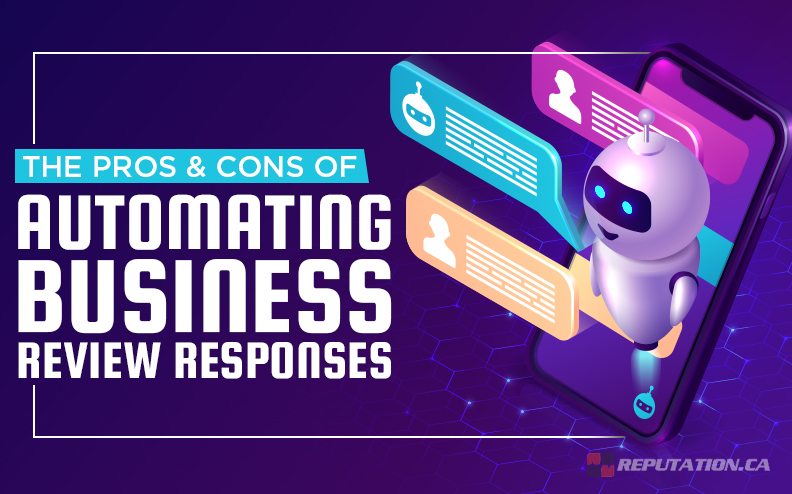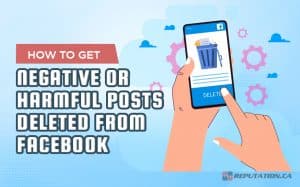Small businesses might struggle with getting reviews. Customers naturally only want to leave reviews when a product or service has a problem, and satisfied users rarely think to leave feedback.
Larger businesses, or businesses with successful review solicitation processes, may be faced with the opposite problem. So many people are leaving their feedback that it becomes overwhelming.
It’s a good problem to have, but it’s a problem nevertheless. After all, feedback is at its best when you can respond to it. When you talk to your customers and engage with them directly, you build better relationships.
Sure, there’s some kayfabe involved. You know that you aren’t able to build a personalized relationship with every customer who leaves feedback, whether it’s a review on TrustPilot or a comment on a blog post. Customers know that you’re not building that relationship either, but it still makes them feel good to get a bit of personalized feedback even if it’s just thanks for a positive review.
What happens, then, if you get a large volume of negative reviews? The best way to deal with negative reviews is to respond to them, reach out to users and try to address their issue, while leveraging their feedback to improve the product or system that caused the error in the first place.
Unfortunately, even in the best of times, this can be a ton of work. You need to:
- Monitor the web looking for negative reviews.
- Analyze a review for its validity, and report fake or false reviews.
- Categorize reviews as an individual or systemic issue.
- Look up customer information to investigate the issue.
- Respond to the review and offer a connection for customer service.
- Offer compensation appropriate to the issue.
- Keep monitoring the situation for resolution.
All of this, while still looking into the issues that led to the negative review in the first place, and dealing with them as appropriate. It’s a ton of work!
It should come as no surprise, then, that enterprising companies have come up with ways to automate some or all of this process (at least, what can be done in an automated fashion), and many other companies use these tools to automate their customer service.
As with any automation, there are pros and cons. What are the pros and cons of automating review responses? Let’s dig in.
The Pros of Automating Review Responses
First, let’s take a look at the benefits you can get from automating your customer service responses. While we’re generally not in favor of complete automation, there are some tangible benefits, and it’s worth knowing what they are so you can weigh the scales versus the drawbacks we’ll mention a little later.
It saves you time. The first and biggest benefit of automating your review responses is the savings in time you get. As with any form of outsourcing, time savings are usually the biggest boon. Depending on who is doing the review responses, that time savings may directly translate into better business development, better marketing, better customer service, or just a more engaged service team.

Every hour spent on responding to reviews is an hour that could be spent on something that requires more nuance and more attention. This holds especially true for certain kinds of reviews, in particular the positive reviews that need a simple thanks, or reviews that point out a common problem you’re working on addressing.
It can deal with widespread issues in bulk. If you encounter a problem with your product, your service, your staff, or a contracted service like your shipping and fulfillment process, chances are a lot of customers are going to be affected by it. Some portion of those customers is going to take to platforms like Twitter or review sites to leave comments, either to warn their friends or others or to try to get your attention to address the issue.

Once you’ve identified these issues and have either resolved them or are working on a resolution, you’ll need to deal with all of the reviews left by people who encountered them. Leaving customized comments in bulk, such as “Thank you for bringing this issue to our attention. We’ve identified the cause and are working to fix it. In the meantime, we’d like to extend both our apologies and compensation,” can help you engage, placate, and compensate your customers for the issue.
You can hit a 100% response rate. Studies have shown that customers tend to prefer businesses who respond to reviews, primarily because they can then be more confident that, if they have an issue, it will be addressed. When a business responds to some reviews but not others, it comes across as more inconsistent, and while it’s better than not responding to any reviews at all, a 100% response rate is much better. However, if you have thousands of reviews across dozens of platforms, it can be a nearly impossible task to respond to all of them manually. Automation can handle this with much greater ease.

You can identify and address fake reviews more easily. There are a lot of specific hallmarks of fake reviews. Some of them include not having records of the transaction a user is complaining about or having proof of exaggeration or a false story. If you can identify a fake review, you can report it to the platform that hosts it to get it removed. However, some platforms do not remove fake reviews or any reviews at all. In these cases, it can be worthwhile to point out that the review is fake in a response.

Just remember that you can’t do this to all of your negative reviews, or other users will (correctly) identify that you’re just trying to downplay your negative reviews. Make sure to only do this to definitely fake reviews.
It may reduce costs in some situations. It costs money to buy a platform to automate your reviews. It also costs money to engineer your own version. In both cases, you have to balance the cost against the cost of what you’re currently doing. Consider the payroll costs of the people currently doing this review management, and whether or not it’s cheaper to pay for a platform or to outsource the service. In some cases, it will be. In others, not so much.

It depends, largely, on whether or not the people you have responding to reviews are paid well. If review responses are just a duty shared by your first-line customer service representatives, chances are it’s pretty cheap. If it’s something you have a specialized employee to handle, or it’s something your marketing director or you yourself handle, that’s another story. Remember, the true cost isn’t just payroll; it’s the loss of what the employee could be doing with that time, as well.
The Cons of Automating Review Responses
There are some definite pros to automating responses to your reviews, but there are also some very real drawbacks. Everyone who has made a purchase online has no doubt seen instances of poorly done automated review responses, and they can be disheartening to see. If you’re interested in a brand but see that the way they address reviews is slapdash, automatic, and poor quality, you’ll be worried about the rest of their offerings. Here are the primary drawbacks of this automation.
It can misidentify issues and trigger the wrong responses. Every single automated review response system has to operate via parsing the language of a review. This usually operates by looking for specific keywords in the review. This can run into all kinds of problems.
- The review might be written in poor English and can confuse the bot.
- The use of a keyword in a different context may be taken incorrectly. For example, if someone says “Shipping was fast, but the product arrived damaged” a bot might identify a shipping issue and submit instructions on how to track a package, which is incorrect.
- Bots rarely handle complex issues very well. Say a customer ordered two products and only received one. How will the bot handle it? Offer a refund? The user might want a specific resolution that the bot isn’t capable of giving.

There are many possible issues for every possible situation in the ordering, shipping, fulfillment, and use of a product, and you have to have a very complex and nuanced bot to handle the bulk of them. Even configuring the bot can take a long time.
It costs money. As mentioned above, a bot system will cost money. In some cases, it will save you money over what you’re currently spending. In other cases, a sufficiently nuanced and complex system might cost enough money to manage that it no longer saves you money. This isn’t necessarily a bad thing, but it depends on how important your budget is.

It increases business reliance on third-party tech. There’s an argument to be made that a business that relies on third-party software is a business with a weakness. What happens if the company that offers the platform you use makes a change to that platform that you don’t like? You can’t exactly change it back. You don’t have much influence on that company unless you’re a massive enterprise customer, and perhaps not even then.
More importantly, what happens if that tech has a bug or issue? A glitch that causes the bot to respond inappropriately to reviews can damage your reputation, and one that simply misses a swath of reviews can lead to other customer service problems.

And, of course, there’s always the problem of that company going under. You might be satisfied with it, but if they aren’t making enough money to maintain operations, or if they’re bought up and rolled into a different service, you’re out of luck.
It’s often easily identifiable as automated. Remember, reviews are not viewed in isolation. Users who read reviews can simply read through all of the recent reviews one after another. They can identify patterns in reviews and can easily identify if they’re left by a bot, using a script, or are faking being personalized. Not even the most sophisticated bot in the world can fake being real in such a limited context.

Now, this isn’t strictly bad. After all, you could have a whole team dedicated to responding to reviews, using scripts, and it will appear in much the same way. What hurts is if this stacks up with the first issue, the lack of nuance and personalization. It’s like getting a form email in response to a support issue; if it doesn’t identify and solve the right issue the first time, it’s intensely frustrating.
The Best Solution
The best solution to handling your reviews, be they negative or positive, in low volume or high, is a mixed solution. Automation can help with some things, but it can only do so much, and even the most advanced automation system will still make mistakes.
Thus, the best option is one of these two.
Option 1 is to develop a hybrid system. Use an automated system to monitor and notify you of reviews, develop replies, and submit those replies, but use human oversight to verify the situation and approve the automatic replies. This can help catch issues before they occur, but it does require a dedicated customer service and review overseer, which is an additional person on your payroll.
Option 2 is to contract a reputation management firm. A reputation manager with a review management service can take over managing your reviews, reaching out to customers to address issues in a personalized way. You can empower them to offer some compensation for issues, and they can deliver feedback to you about the issues customers experience, so you can address the problems at the heart of the reviews.

Regardless of the option you choose, you need to choose something and put a process into place. Your users won’t wait; they want to have their issues looked into, and if that means blowing up an issue on Twitter or otherwise trying to threaten your reputation to get their needs cared for, they’ll do so. The only question is, what do you do about it?












